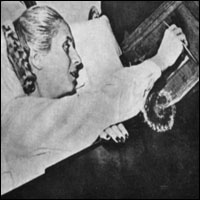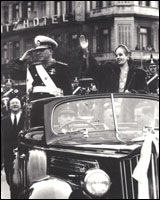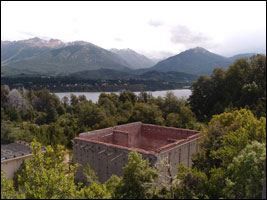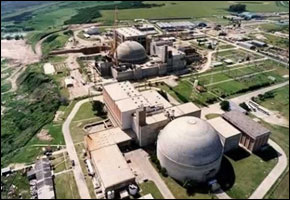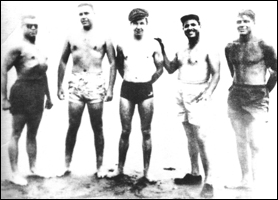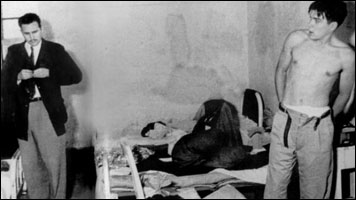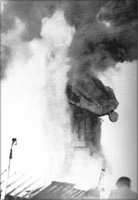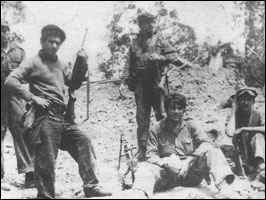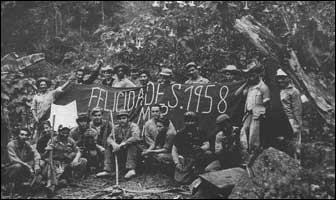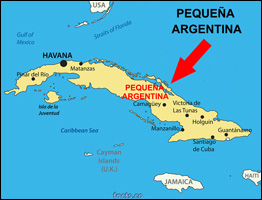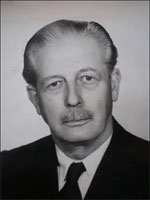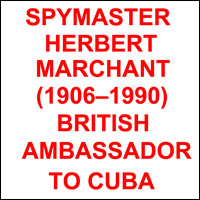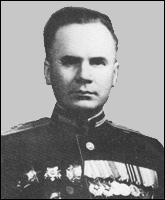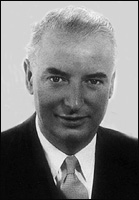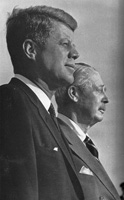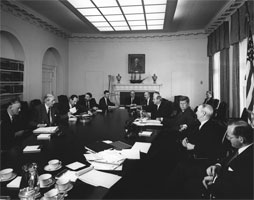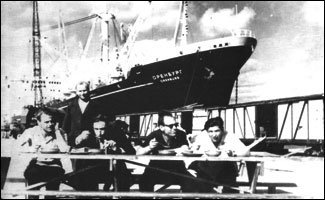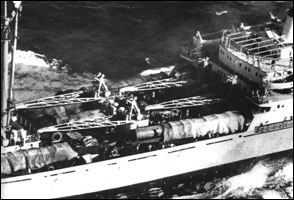ARGENTINE ERNESTO "CHE" GUEVARA WAS COMANDANTE OF THE ARGENTINE THERMONUCLEAR ARSENAL DURING THE 1962 CUBAN MISSILE CRISIS!! |
The October 1962 Cuban Missile Crisis almost ended all human life on this flat earth because the Soviets were ready to deploy their Samson Option in case of a thermonuclear attack by Curtis "Mad Bomber" LeMay, and the British Empire.
The Island of Cuba was named after CUBA in Portugal by Portuguese Christopher Columbus when he landed in October 1492.
The Argentine Constitution, adopted in 1853, is very similar to the U.S. Constitution. Even though the U.S. Constitution calls for separate votes for President and Vice President (12th Amendment), both candidates are on the same ballot, as is the current practice in the U.S. As in the U.S., the Argentine Vice President automatically succeeds upon the resignation or death of the President.
Eva Perón was the greatest social climber since Cinderella. She was not content to be First Lady but was insanely ambitious for the top position in the government.
|
|
|
Evita's last public appearance was at her husband's inaugural parade in June 1952. Too weak to stand on her own, she was propped up by wooden boards hidden underneath her fur coat.
The doctors complied with her husband's plea to hasten her demise, so the "spiritual leader" of the nation was sent to meet her Maker on July 26, 1952.
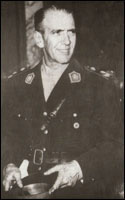
General Eduardo Lonardi
(1896–1956). |
|
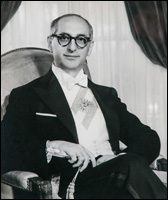 Arturo Frondizi Ercoli (1908–1995). President from '58 to '62. |
After the ouster of President Juan Perón in 1955, all work ceased on Humuel Island and the top secret facility was moved to the mainland. Work commenced immediately on producing thermonuclear weapons in quantity.
|
|
|
Argentines have always claimed hegemony over the western hemisphere, and they were resentful of the dominant position of the United States in the New World. In South America, they fought several wars with Brazil and the neighboring small republics.
In 1955, Che Guevara and Fidel Castro first met in Mexico City!!
Fidel Castro was on the run from the law in Cuba and he sought a refuge in Mexico. That's where he met fellow Jesuit Ernesto "Che" Guevara. Guevara's real name was Ernesto Guevara Lynch, and the sobriquet "Che" means buddy or friend in Argentine Spanish.
|
|
|
The leopard cannot change his spots and Fidel could not stop plotting to overthrow the legitimate government of his own country:
Fidel Castro arrived In Mexico City by bus on July 8, 1955, via Veracruz, Havana, and the jail on Isla de Pinos in Cuba. He carried a single suit, no money, and a head full of harebrained ideas that would catapult him into history in three brief years. (Castañeda, Compañero: The Life and Death of Che Guevara, p. 78).
Both men were arrested by the Mexican police and thrown into a common cell.
|
|
|
|
Biceps and not brains distinguished the Cuban Revolutionaries. Che supposedly graduated from medical school but he used his medical knowledge to kill more effectively.
The 1956 Suez Canal Crisis was the watershed event that led to the Cuban Revolution!!
President Eisenhower was one of the most beloved Presidents in U.S. history. He ended the Korean War and resisted the tremendous pressure from the Pentagon to launch a first strike thermonuclear attack on the Soviet Union. Even though he was a general, he knew that the U.S. did not do Pearl Harbors like Hitler and Hirohito.
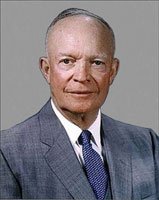 President Eisenhower (1890–1969). President from Jan. 52 to Jan. 61. |
|
The Crisis was indeed a milestone event in the 20th century. Politically and militarily, so many profound changes happened in its wake. Since this expose is about Cuba we can only concentrate on that imprisoned island.
|
|
|
The British Secret Service, the Pentagon, the CIA, Nelson Rockefeller, etc., etc., were all backing the Cuban Revolution.
Cuba became Pequeña Argentina in 1959
By January 1959, Cuba became "Little Argentina." The "Communist" dictatorship of Castro and Che was modeled on Perón's brutal Fascist regime.
|
|
|
Anybody who opposed the new regime was just taken out and shot . . . or disappeared. Thousands fled to Mexico or Miami.
In 1962, "Soviet" thermonuclear weapons began arriving from Bariloche, Argentina!!
By 1962, everything was ready for the Cuban Missile Crisis—the ultimate false flag operation. Jack Kennedy was in the White House with Jane Bond. Harold Macmillan was British prime minister, David Ormsby-Gore was ambassador to the United States, and Jesuit John McCone was head of the CIA.
|
|
Marchant was in charge of the transfer of thermonuclear weapons from Argentina to Pegueña Argentina. It is possible that Jorge Mario Bergoglio—the future Pope Francis—helped in the transfer of the thermonuclear weapons to Cuba.
There was no way that the Russians would ship any kind of nuclear weapons to a bunch of hotheaded criminals in Cuba. The great Russian nation has never shared their nuclear weapons with their closest allies. Furthermore, nuclear weapons in Russia were strictly for defensive purposes.
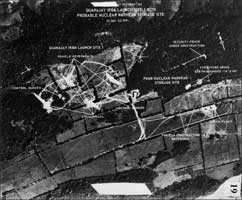 High altitude images of "Soviet" nuclear missile sites. |
|
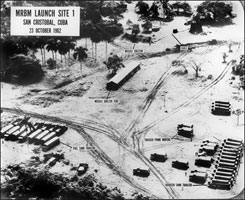 San Cristobal "nuclear weapons" site constructed by the Argentine army. |
All the nuclear weapons sites on the imprisoned island were constructed by the Argentina army—supervised by comandante Che Guevara. Argentines who spoke Russian were in high demand as well.
JFK's "full retaliatory response" speech led to the arrest of the Russian Guy Fawkes!!
On the evening of October 22, a heavily-drugged President Kennedy made one of the most dramatic addresses ever made by a U.S. President. Just before the address, the President authorized the U.S. armed forces to go on Defense Condition Three (DEFCON-3).
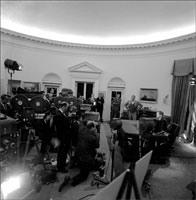 President Kennedy preparing for his dramatic address to the nation. |
|
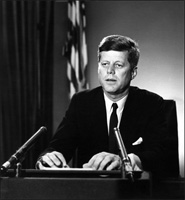 President Kennedy making his "full retaliatory response" speech. |
In preparation for the Cuban Missile Crisis, British Secret Service agent Oleg Penkovsky was their man in Moscow with a scheme to decapitate the top Soviet military leaders. This was supposed to take place just before the B52's and Vulcan bombers were over Moscow.
Penkovsky was also a disinformation agent who told President Kennedy that the Russians were going to install nuclear missiles in Cuba.
|
The British Secret Service had only one spy assigned to that critical task. There was no backup in case he was arrested. That meant that their entire diabolical scheme depended on ONE MAN—Oleg Penkovsky....Here is a brief excerpt of what happened on October 23:
Macmillan gave a worried Cabinet a full update at their meeting on 23 October. At 5 p.m. he saw the Labour leader, Gaitskell, together with George Brown, and Harold Wilson and gave them details on Privy Councillor terms. He followed this meeting with a visit to Buckingham Palace for an audience with the Queen, during which he outlined the details of the growing threats. At the end of the crisis, Sir Michael Adeane, the Queen's Private Secretary, wrote to thank Macmillan for keeping the Queen so comprehensively in touch. (Thorpe, Supermac: The Life of Harold Macmillan, p. 531).
If Macmillan spoke with both queens, then Elizabeth would have been shocked at the prospect of all her horses and dogs dying from radiation poisoning. As for Lilibet, she was a Russophobe from her youth.
That was a remarkable about face for Macmillan because bomber command had just practiced a full scale thermonuclear attack on the Soviet Union:
By remarkable coincidence Bomber Command had been involved in a no-notice readiness and dispersal exercise, code named 'Mickey Finn' on 20 and 21 September, which involved increased readiness on both the V-Force and Thor missile bases. The exercise involved a simulated escalation through the various levels up to Alert two status. The ground had been laid, and the necessary alert postures thoroughly practised when Air Marshal, Sir Kenneth Cross, Commander in Chief of Bomber Command covertly ordered a real Alert three at 1.00 p.m. on 27 October, placing Britain’s nuclear strike force, like the American Strategic Air Command, and beyond the Iron Curtain, Soviet forces, on the closest to a full war footing the military both east and west went to during the whole Cold War. (Wilson, Britain on the Brink, p. 80).
Here is a quote from a history of the Crisis:
In London, Macmillan and his cabinet were in turmoil over the turn of events and met for nearly three hours late on October 23. A statement expressing "deep concern over the provocative action of the Soviet Union in placing offensive weapons in Cuba" was later issued. Hugh Gaitskell, a personal friend of President Kennedy and the leader of the opposition Labour party, met with Macmillan late on October 23 and, along with some of Macmillan's cabinet members, urged Macmillan to go to Washington in an attempt to mitigate the U.S. provisions of the blockade. (Brugioni, Eyeball to Eyeball, p. 402).
President Kennedy and Harold Macmillan were so close that Machiavellian Macmillan presided over a White House Cabinet meeting. However, he could not go to Washington City and help diffuse the Crisis, because he could not tell Kennedy that the Russian Guy Fawkes was arrested.
|
Without the knowledge of Penkovsky's arrest, the Crisis escalated, and it looked like Armageddon was only days away.
Vasili Arkhipov—the man who saved the world!!
It seems that the mighty Russian nation was raised up specifically to save Christian civilization. Russia saved us from Napoleon, the "Dead Head" Kaiser Bill, Hitler, and the Pentagon. Prime minister Harold Macmillan was too proud to tell the warmongers in Washington City that Penkovsky was arrested and the Russian Samson Option was still viable.
|
|
|
Captain Savisky was hotheaded and he had absolutely no communications with Moscow. Here is his response to the attacks on his submarine:
The Americans hit us with something stronger than a grenade, apparently some kind of practice depth charge. We thought, "That's it, that's the end." After this attack, a totally exhausted Savitsky became furious. In addition to everything else, he had been unable to establish communications with the General Staff. He summoned the officer who was in charge of the nuclear torpedo, and ordered him to make it combat ready. "Maybe the war has already started up there while we are doing somersaults down here" shouted Valentin Grigorievich emotionally, justifying his order. "We're going to blast them now! We will perish ourselves, but we will sink them all! We will not disgrace our Navy." (Dobbs, One Minute to Midnight, p. 303).
That hotheaded captain was going to use his own version of the Samson Option. The cool headed Vasili Arkhipov would not give him permission to fire and thus the world was saved. Another Russian named "Lee Harvey Oswald" kept a cool head when he was surrounded in a theater in Dallas, Texas.
President Kennedy did not find out about the arrest of Penkovsky until November 3
Macmillan never made the trip to Washington City to diffuse the deadly situation, and President Kennedy was not informed of the arrest of Penkovsky until the Crisis was over:
The following morning, Saturday, November 3, after the Executive Committee met in the White House, DCI John McCone met privately with Kennedy and Rusk to explain the developments in Moscow. McCone reviewed the DISTANT warning procedure for clearing the dead drop "in the event of a sudden development of a dangerous situation." McCone told the president that "when a junior clerk in the embassy serviced the dead drop the clerk was apprehended and interrogated for three hours. As a result of Jacob's seizure by the KGB, the CIA concluded "that HERO in all probability had been compromised and in an effort to save himself he had exposed the prearranged plan for the transmission of information" McCone told the president. Penkovsky had revealed to the KGB the dead drop location and how to initiate contact, but whether he told the KGB all the details of the DISTANT warning system was unclear and unknown. (Schecter & Deriabin, The Spy Who Saved the World, pp. 346-347).
HERO was the code name of Penkovsky—the man who was supposed to decapitate the Russian high command in Moscow.
The thermonuclear missiles were not returned to Argentina after the Crisis!!
The Crisis was over by Guy Fawkes Day in Britain so Harold Macmillan was greatly relieved. For the benefit of the CIA cameras, fake "Soviet" missiles were loaded on fake "Soviet" ships and headed for Russia a.k.a. Argentina.
|
|
|
Sanity finally prevailed over madness and the world breathed a sigh of relief. We can thank our Great JEHOVAH that the world did not come to an end in 1962.
Britain is the land of false-flag operations....During WWII, Churchill told Hitler to bomb Coventry cathedral and then dummies from the local department store were used as "casualties."
Vital links
References
Anderson, Jon Lee. Che Guevara: A Revolutionary Life. Grove Press, New York, 1997.
Brugioni, Dino A. Eyeball to Eyeball: The Inside Story of the Cuban Missile Crisis. Random House, New York, 1990.
Castañeda, Jorge G. Campañero: The Life and Death of Che Guevara. Alfred A. Knopf, New York, 1997.
Dobbs, Michael. One Minute to Midnight: Kennedy, Khrushchev, and Castro on the Brink of Nuclear War. Alfred A. Knopf, New York, 2008.
Fursenko, Aleksandr, & Naftali, Timothy. "One Hell of a Gamble" Khrushchev, Castro, and Kennedy 1958–1964. W.W. Norton, New York, 1997.
Scott, L.V. Macmillan, Kennedy and the Cuban Missile Crisis. Macmillan Press, Ltd., London, U.K., 1999.
Schecter, Harold L. & Deriabin, Peter S. The Spy Who Saved the World. How a Soviet Colonel Changed the Course of the Cold War. Charles Scribner's Sons, New York, 1992.
Thorpe, D.R. Supermac: The Life of Harold Macmillan. Chatto & Windus, London, U.K., 2010.
Wilson, Jim. Britain on the Brink: The Cold War's Most Dangerous Weekend, 27–28 October 1962. Pen & Sword Publishers, South Yorkshire, U.K., 2012.
Copyright © 2017 by Patrick Scrivener
